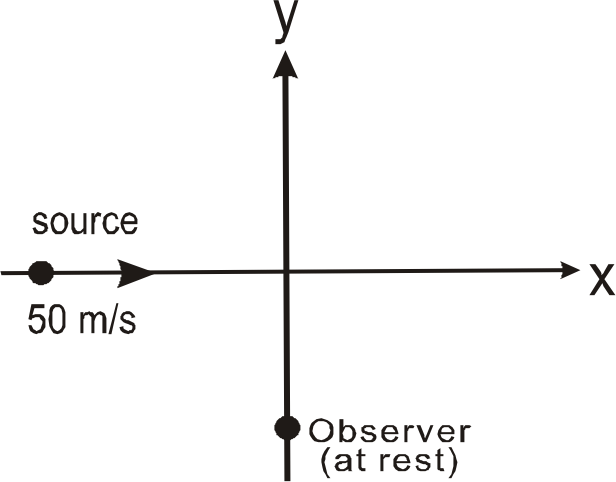For sound waves, the Doppler's formula for frequency shift differs slightly between the two situation :
(i) source at rest , observer moving (ii) source moving , observer at rest.
The exact Doppler formulae for the case of light waves in vacuum, are however, strictly identical for the two situations in case of light travelling in a medium ?
Sound wave s require a material medium for propagation. That is why situation (i) and (ii) are not identical physically through relative motion between the source and the observer is the two situations. That is why Doppler's formulae for sound are different in the two cases.
For light waves travelling in vaccum, there is nothing to distinguish between the two situations. That is why the formulae are strictly identical.
For light propagation in a medium, situations (i) and (ii) are not identical. The formulae governing the two situations would obviously be different.
Topper's Solved these Questions
- BOOK - PRADEEPCHAPTER - OPTICSEXERCISE - Very short answer question5videos
OPTICS
- BOOK - PRADEEPCHAPTER - OPTICSEXERCISE - very short answer questions1videos
OPTICS
- BOOK - PRADEEPCHAPTER - MAGNETIC EFFECT OF CURRENT AND MAGNETISMEXERCISE - Competition Focus (Multiple Choice Questions)2videos
MAGNETIC EFFECT OF CURRENT AND MAGNETISM
Similar Questions
Doppler shift in frequency of sound is independent of (Source is moving on the straight line joining source and observer)
View SolutionDoes the change in frequency due to Doppler effect depend on (i) distance between source and observer? (ii) the fact that source is moving towards observer or observer is moving towards the source?
View Solution
Knowledge Check
- Question 1 - Select One
If a source of light is moving away from a stationary observer, then the frequency of light wave appears to change because of
ADoppler's effectBInterferenceCDiffractionDNone of these - Question 2 - Select One
Doppler's effect is sound in addition of relative velocity between source and observer, also depends while source and abserver or both are moving. Doppler effect in light depend only on the relative velocity of source and observed. The reason of this is
AEinstein mass-energy relationBEinstein theory of relativityCPhotoelectric effectDnone of the above - Question 3 - Select One
Dopper's effect is sound in addition of relative velocity between source and observer, also depends while source and observer or both are moving. Doppler effecct in light depennd only on the relative velocity of source and observer. The reason of this is
AEinstein mass-energy relationBEinstein theory of relativityCPhotoelectric effectDnone of the above
Find the diffference is the apparent frequencies (i) When the source approaches a stationary observer (ii) When observer is approaching the stationary source. Take b as relative velocity in each case and υ as the velocity of the waves.
View SolutionConsider two sound sources S1 and S2 having same frequency 100 Hz and the observer O located between them as shown in the fig. All the three are moving with same velocity in same direction. The beat frequency of the observer is
 View Solution
View SolutionLet us list some of the factors which could possibly influence the speed of wave propagation : (i) Nature of source (ii) direction of propagation (iii) motion of source and//or observer (iv) wave length (v) intensity of the wave.
On which of these factors, if any does (a) the speed of light in vaccum (b) speed of light in a medium (say glass or water) depend ?View SolutionConsider the droppler effect in two cases. In the first case an observer moves towards a stationary sound-source, with a speed V1. In the second case, the observer is at rest, and the source moves towards the observer with the same speed V1. Then the frequency heard by the observer
View SolutionA sound source moving with speed 50 m/s along x-axis and observer at rest on y-axis.If the frequency observed by observer when source crosses the origin is 96 Hz, then the original frequency of source is :(speed of sound is given medium is 200 m/s)
 View Solution
View Solution

